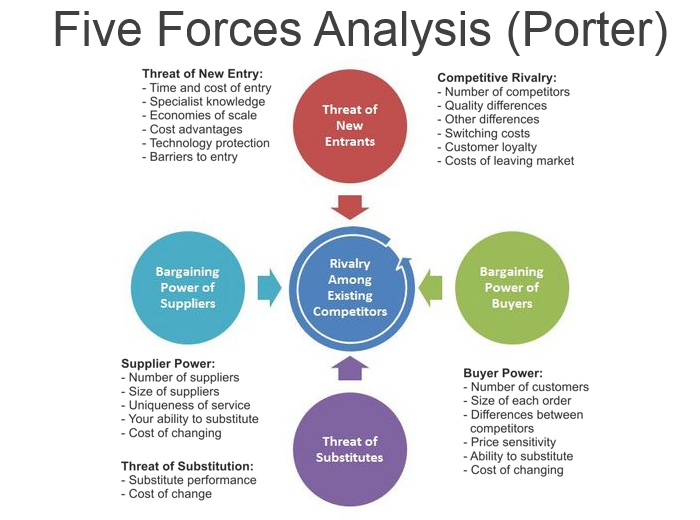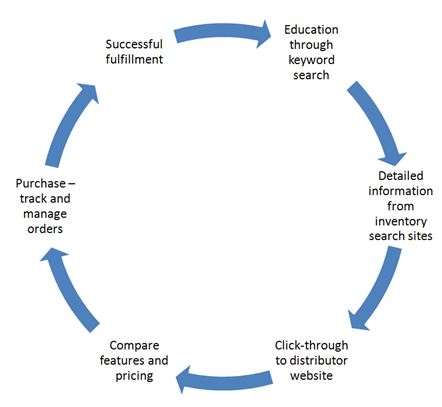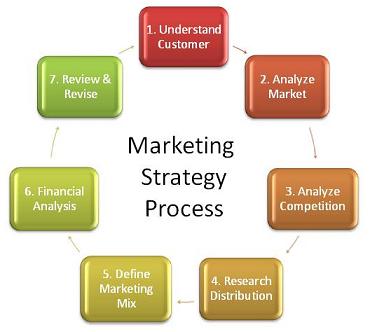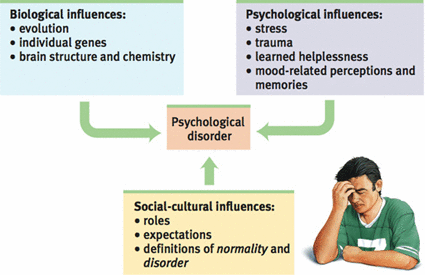Ecommerce Industry And Competitive Environment Study
Ecommerce is not a new name for any of us and at the pace it is growing, Ecommerce is certainly proving to be the new face of how we to do business today. Before going into the details of Ecommerce industry study and its competitive environment, let us briefly analyze initially what Ecommerce is?
Ecommerce also known as Electronic Commerce is referred to the selling, purchasing and exchanging of services and goods over computer networks and all sales terms and transactions are performed electronically. It is believed that Ecommerce is referred to business done via internet only, which is not true as even before introduction of the internet, business to business transactions took place electronically via Value Added Networks (VANs) and Electronic data Interchange (EDI).
Ecommerce can be parted in mainly four categories
- Business to business (B2B)
- Business to consumer (B2C)
- Consumer to business (C2B)
- Consumer to consumer (C2C)
B2B category refers to companies doing business together in form of manufacturers selling to wholesalers and distributors and then to other retailers. B2C business is the best known form where businesses sell directly to customers. Whether you require to purchase a diary, a dress, a book or a toy, everything is available very easily on the net in a wide variety. B2C being a popular form of Ecommerce will be the main topic which will be discussed in this paper. C2B is referred to people selling their services to companies. For example companies on a budget post their job requirement along with their budget on special websites on which potential service providers bid to perform the job. The company then selects from scrutinizing candidates. C2C is referred to direct consumer to consumer selling in bidding sites or on auction sites. Many websites today offer the facility to directly post ads by consumers for consumers. These sites serve as a mutual trading location for sellers and buyers.
There are also other forms of Ecommerce too such as Government to Government (G2G), Government to business (G2B), Government to Employees (G2E), Business to Government (B2G), Citizen to Government (C2G), Government to Citizen (G2C) and several other types of other Ecommerce classifications.
Historical Ecommerce Industry Overview
The very initial instances of Ecommerce appeared in the initial phase of the internet in 1970s when electronic transactions began taking place in business networks designed specifically to simplify and modernize certain processes of a business such as sending invoices and filling of orders by customers. Ecommerce however became popular when electronic transactions became possible and home computers became common. Businesses availed this opportunity and the early birds are among the highest profit reapers online today.
With a history dating back to a few decades only, the growth experienced in computing technology and networking is exponential and even with a slumping global economy, the sales related to online retailing has is ever increasing.
One prominent name in Ecommerce is Amazon.com which presented the first full scale model of Ecommerce business in 1995 after the World Wide Web was introduced in 1990 by Tim Berners-Lee. 1994 and 1995 were the years that initially saw third party services being introduced in online sales in form of credit card sales.
The next name prominent in Ecommerce history is eBay. As Amazon introduced to the world a common platform practicing B2C Ecommerce practices, eBay levelizing the concept proved that one is not required to be an established entrepreneur or an existing online business to sell goods online. eBay paved way for C2C type of Ecommerce. Today people can buy almost anything online from home goods to shoes, fitness products and even a real shark tooth and all this owed initially to Amazon and eBay who paved the base road for Ecommerce merchants of today.
Although Amazon and eBay are the biggest and famous names that arose as first examples of Ecommerce sites, however they were not the first. The first reported Ecommerce site that initiated the online transaction process was Netmarket, and was the first online retailer that conducted the first secure web retail transaction. The transaction took place on the 11th of August, 1994, where Netmarket sold a Sting CD copy of the Ten Summoner’s Tales. The transaction amounted to $12.48 exclusive of shipping. Similarly the first online bank that performed financial transaction online was on October, 1994 when the Stanford Federal Credit Union offered internet banking facilities to its customers.
Assessing Ecommerce Industry Based on Michael Porter 5 Forces
The model depicting the intensity of the five forces in terms of Ecommerce industry highlights the Rivalry and Buyer power in Red depicting higher levels of intensities compared to substitute threats in Orange.

Model 1 – Michael Porter 5 Forces Analysis of Ecommerce
Assessing Ecommerce on the five forces defined by Michael Porter namely degree of rivalry in an industry, threat of substitutes, barriers of entry, supplier bargaining power and buyer bargaining power allows us to better understand the underlying situations of the industry and accordingly a brief analysis of the industry in terms of the 5 forces is given below.
Rivalry in Ecommerce is great owing to several sellers or players in a single field competing against each other to attract more and more customers. Competition among Ecommerce site is fierce especially with regards to prices as even a small shift in price goes a long way in defining the sales of a particular site within the whole lot.
The threat of substitutes is also relatively higher in the Ecommerce industry owing to a million different players offering the same or somewhat same (substitute) form of goods and services. Since the web has in fact transformed the entire globe into one single market place, this makes availability of substitutes even greater as newer techniques are defined every day that can easily and effectively replace older one, thus turning the strength of a seller on a single day into his weakness on the other. Staying updated constantly and continuously is a prerequisite in Ecommerce industry.
There is literally no barrier of entry in Ecommerce industry. Barrier to entry formerly in brick and mortar industries was associated highly to expertise and capital which has transformed into the least of new entrants worries today. This however does not mean that everyone who enters the industry will get noticed too. In a particular sector of Ecommerce where an old player has invested in time and money along with required knowledge, skill and capability, entrance for new potential sellers is not an easy task. For example any business that has heavily invested in EDI and is using it, will automatically create a barrier for new entrants in the particular trade center. However conversely, owing to the advancements in technology, new ideas emerge every now and then paired with the fact that need to invest heavily in infrastructure is also eliminated, it becomes easy in several sectors of the industry to enter, for example online banking. Since physical buildings are not required, through using advanced internet technology paired with an excellent marketing plan a very unique and successful online banking service program can be initiated.
Bargaining power of suppliers is great in Ecommerce in sectors where relatively low number of suppliers exist such as specialty products. However since generally a lot of suppliers are available, supplier bargaining power is compromised. Every business would want the best bargains from its own suppliers and lot of competition between suppliers equals to reduced bargaining power and vice versa. Also if any supplier is not enabled electronically, automatically its bargaining is reduced.
Bargaining power of buyers is immense in Ecommerce industry owing to the need of keeping production and management costs as low as possible to stay profitable at maximum levels. Also in terms of competing with rivals, Ecommerce businesses require to be as efficient as possible. Also the bargaining power of buyers in any particular sector of Ecommerce is associated with two factors the supply of the product and the number of competitors in a market. With a larger competitor count, buyers bargaining power is at maximum and vice versa. Similarly a surplus in the supply of goods in the market leaves the buyers at a higher bargaining power position. Citing the present Ecommerce scenario, buyers are by far in a much higher bargaining power in a majority of Ecommerce sectors.
Ecommerce Supply Chain Model
Typically an Ecommerce site’s supply chain can be broken down into Customer’s Demands and Feedback, Research Team Proposals, Manufacturers/Suppliers, Ecommerce Business, Digital Financial Institutions, Shipping Companies, Consumer.

Model 1 – Ecommerce Supply Chain Model
Owing to the abundance of competition and the soul nature of Ecommerce industry as being closer and more aware of customer’s requirement, makes awareness of customer’s demands and receiving of feedback regarding product or service a prerequisite in many sites that operate online. Many of the top sites online follow the system of collecting feedback data from customers to device products accordingly to customer’s demands. Although there is a lot of other technological advancement and expert analysis going on in between the main players involved in the Ecommerce transactions as everyone wants to offer the best goods to customers in the easiest possible way however here we will be discussing the above mentioned cycle in particular. For a complex picture of the supply chain in Ecommerce industry refer to the Model 3 at the end of the report.
The normal transaction in an Ecommerce site starts from the manufacturer producing and presenting for sale a particular product that is designed according to present market demands. The products is then priced and presented online to be viewed by customers in the most appealing way that compels them to purchase it. One a purchase is done from a site; the next involved party is the financial institution that will take care of the transfer of funds from the purchaser to the seller. Finally when the customer is done with the buying experience from a site and receives the product, the last step is a feedback which every customer is asked to give regarding the experience and the product/service.
To particularly explain the buying experience of a consumer on Amazon, to better understand the working facet of Ecommerce sites, let us analyze a case study where a particular customer wishes to buy an iPod from Amazon.com. The very first step to shop online and benefit from eShopping facilities is to visit the Amazon.com site and search for the desired product (iPod in this case). The customer has three options to find products related to iPods purchase. Firstly he can find the iPod section on the main page of Amazon or search for it in the “shop all department” or simply visit the electronics category and find the iPod section. As soon as the customer reaches the iPod section, a wide choice of different types and makes of iPod will be available to choose and from them the customer can decide on the one that he wants. The customer will then select that product and add it to his shopping cart on Amazon. If the customer wishes to buy any other thing he can go for it before the payment options appear before him. Once the customer is done with his shopping, he will then proceed to checkout where he will have to go through the membership option if he is a new customer, whereas if he is not he will enter his email ID after which he will be giving all relative details including name, address, postal, etc.
After the shipping details are done with, the customer will then choose the shipping mode he prefers from the various different options provided by Amazon before moving on to the payment mode selection part. Amazon allows you to choose from whether you will be paying through your bank account, your credit card or through the Amazon.com store card. Next you can enter the promotion code for the product and after confirmation of the details being valid, the customer can finally once again confirm the order and the purchase is complete.
Manufacturers today are engaging more and more with their potential customers to offer them exactly what they want, as only those can compete in the industry that are fulfilling the demands of the customers. Knowing what a customer wants previously was associated to very few ways such as surveys, etc. Today however, finding out the preferences and demands of customers is easier as technology has enabled every business to reach out to its customers via social networks and direct online interactions. The supply chain of the Ecommerce industry has thus changed a lot as initially the manufacturer paid more attention on the emerging trends and produced products which were then sold to the customers and feedback was received. Today the supply chain starts and ends at the customers. Manufacturers today interact with potential customers to inquire and know more about their expectations and demands and then accordingly move on to the production phase.
One such example is Amazon itself which sores all data of the customer’s visit and the products they purchased, every comparison they made. Etc. Amazon literally stores in all information coming from every click of every visitor that visits the sites and through compiling these date along with the customer reviews, Amazon.com knows perfectly what a customer wants, prefers and demands.
Once this phase is completed, presentation of these products on the online site is the next place that is evolving through time. Initially sites that offered services or products for sale use to present simply the description of the product or a photo of it to its customers, however today technology has enabled Ecommerce sites to upgrade to phenomenal levels. Not only does these sites regularly upgrade what they present rather a very thorough description and closer to reality images of the product present the same feel and look that is offered in a brick and mortar store. Today you can investigate every corner of a product before purchasing it. In terms of prices, there are several sites that offer services in comparing what a site offers in contrast to others and based on features, effectiveness and price comparability one can easily choose the best service or products for themselves.
Next comes in the financial institutions that play a major role in transforming the Ecommerce industry today. Almost every bank operates online today offering online banking solutions. Ecommerce sites in order to facilitate customers offers a variety of online financial solutions to choose from. You can pay easily through credit cards, direct online transfers or also through online financial institutions such as PayPal. Every Ecommerce site offers a variety of payment options so that customers from the world over feel easy to purchase from that site.
In the past banks have been slow in introducing mobile banking payment options however today they too realize that it is the need of time and more and more banks are introducing mobile payment options. These options today are not only found in form of mobile banking apps but also non-banking players are moving in this area of providing NFC (Near field communication) services of payments to customers.
One latest example of NFC services incorporation with mobile payments is the Apple Pay. Recently Apple has announced its new payment feature, named Apple Pay, which is a NFC compatible system that will allow the iPhone 6 and 6 Plus users to make their payment at more than 200,000 US retail locations. Apple has also boosted up its security features addressing some of the top mobile payment concerns of the consumers. With this massive mobile payment option, the world of mobile wallet is expected to boom to new heights.
Mobile payments are not still very popular as at the end of 2013, according to a survey only 6% of adults in US claimed to have used a mobile payment option at the payment terminal however the percentage is expected to grow by 33% by the end of 2014. Mobile wallet adoption is at a high and the new millennial (individuals aged 18 to 34) are the top users of mobile wallets. The newly arising in-app crowd that is allowing a bypass payment terminal for users to make purchases via their phones is promising a fundamental change in how we pay in restaurants and bars making the whole process completely software driven.
Shipping companies or courier services are also a major part of the supply chain as the assuring processing of the goods to the customers in the shortest possible time effects the whole purchasing experience tremendously. Earlier on a few shipping options were present only and normally companies used to cater to local markets only, however today the scenario has changed completely. Companies today cater to international markets as well offering competitive ways to ship products to purchaser.
Lastly the process of receiving feedback which can also be termed as the initial part too is critical to the whole process as special research teams analyze the feedback and accordingly not only improve and enhance services and products but also the purchasing experience of the customer.
Through time as lot of change has been seen in this typical Ecommerce supply chain as earlier on the number of online financial solution providers was limited whereas today several different options are available. User interface has been improved tremendously owing to technological advancements and international shipping companies have made international shipping affordable and a pleasurable experience opposed to a few years ago.

Earlier on in Ecommerce scenario, the product was the main focus of attention for a buyer as they were more interested in the quality and price of the product, however with the increased competition online, a buyer can easily find today, the best product and prices and so the concern of customers has shifted considerably towards the best shipping and secure financial dealing options. The widespread of the internet has also conjured up a lot of fraudsters that are always after tricking people off their money and financial institutions to overcome this fear of shoppers regularly update and ensure safe and secure transactions of finance and related information. The margins of Ecommerce industry although do focus on the product and service however a shift towards secure financial options has been observed and the online financial institutions seem to be in a bliss of time currently in terms of earnings online.
Companies that offer secure financial transaction ability, diversity in product portfolio and a diverse selection of shipping options today are gaining that competitive edge over competitors. Owing to the same fact new payment options such as Apple pay or other forms of mobile payment will further revolutionize the online financial sector and the already blooming segment of Ecommerce industry is expected to see more enhancement and progress through introduction of more secure and easier payment options.
The supply chain network of Ecommerce industry is continuously showing shifts as initially the Ecommerce sites through a variety of low priced and competitive products were luring customers towards themselves and earning more money. However today with more and more easy mobile payments, big companies like Apple can reap benefits of the financial payment methods and sell their products easily to customers. Although sites that offer diverse products are the high earners today, the trend is definitely shifting.




